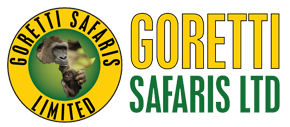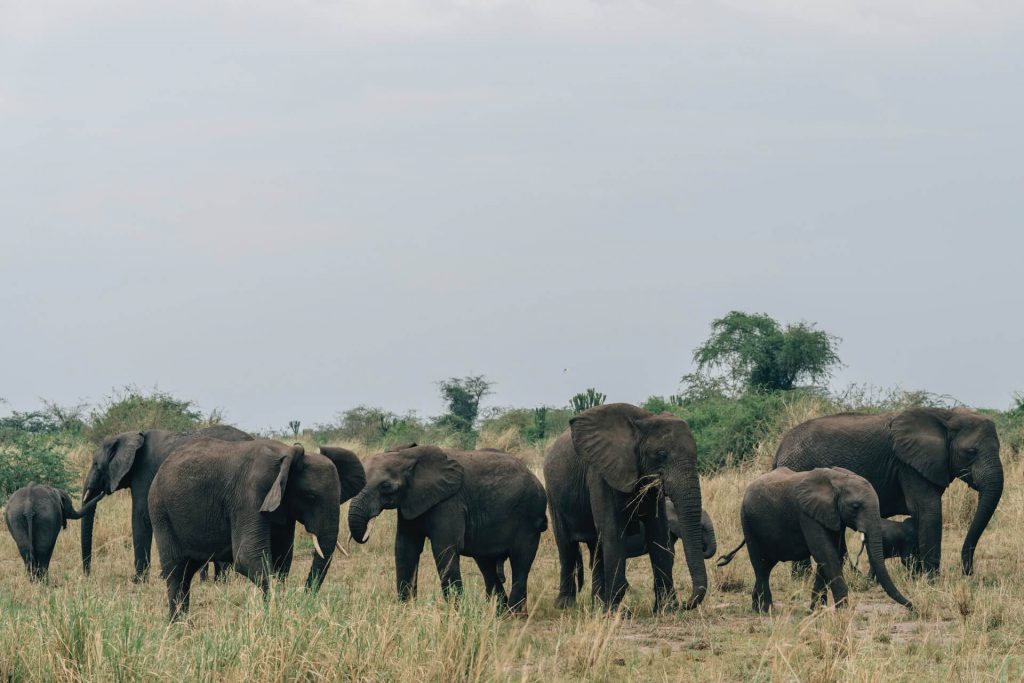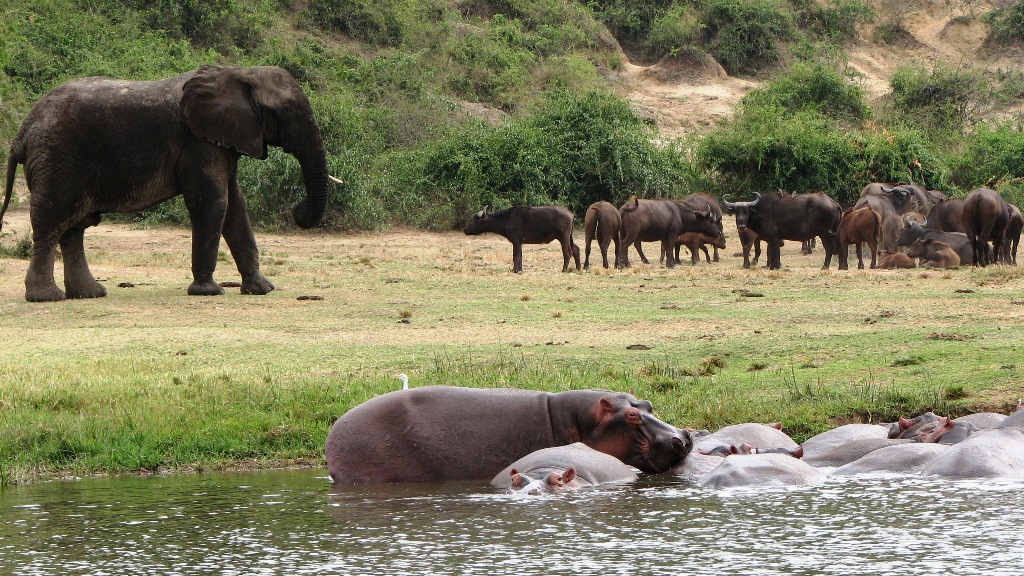Established in 1952 under the British Colonial Government, the park was initially called Kazinga National Park. Later in 1954, the park was re-named Queen Elizabeth National Park as a tribute to Her Majesty the Queen of England when she visited the park that very year.
Covering a total size of 1978km², Queen Elizabeth National Park is home to about 95 mammal species and more than 600 recorded bird-species. The park has the highest record mammal and bird species beating all the other nine National Parks and ten game reserves in Uganda. This park has a rich ecosystem with vegetation ranging from expansive savannah grasslands, wetlands and forests thus a variety of natural habitats for wildlife.
Lying in backdrop of the great Rwenzori Mountains, Queen Elizabeth National park, day temperatures range between 18 – 28˚C. Temperatures drop when night falls thus warm clothes are highly recommended. The most elevated point in the park is in the Katwe Explosion Craters is 1350 meters above sea-level whereas the lowest above sea-level is Lake Edward that stands at a height of 910 meters.
The most striking features of Queen Elizabeth National Park are the 72 explosion craters that were naturally broadcast to prove the volcanic mayhem that led to their existence. Lakes Edward and George are spectacular lakes that support the survival of animal and plant species within the park. They two are magically linked by an approximately 33kms long Kazinga Channel. The channel is renowned for the picturesque boat-launches that form as a platform for tourists to explore amazing wildlife. Mweya Penisular commands the most spectacular views within the park and the most strategic point within the park. Kyambura Gorge and the tale of Chimpanzees as well as Ishasha Wilderness and the tree-climbing lions.
Activities in Queen Elizabeth include Nature Walks, Game-drives, Chimpanzee Tracking, Birdwatching, Mongoose Walk, and Predator Tracking among others. Birding is unique because avid birdwatchers can see both East, Central and some West African birds.
Established in 1952 under the British Colonial Government, the park was initially called Kazinga National Park. Later in 1954, the park was re-named Queen Elizabeth National Park as a tribute to Her Majesty the Queen of England when she visited the park that very year.



